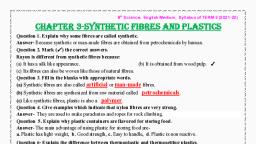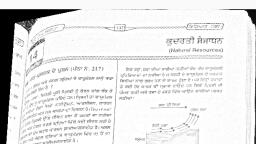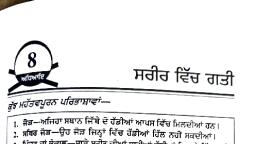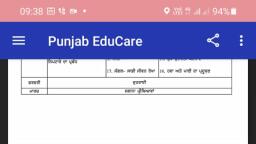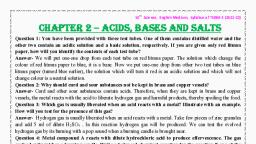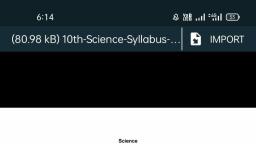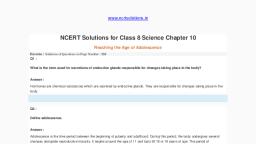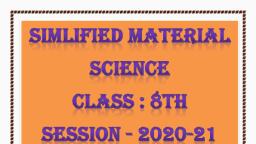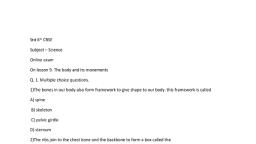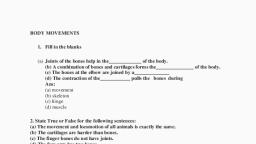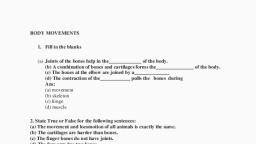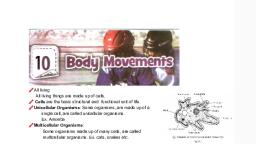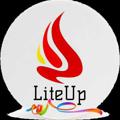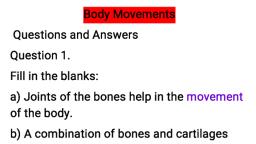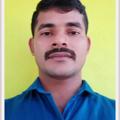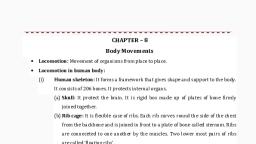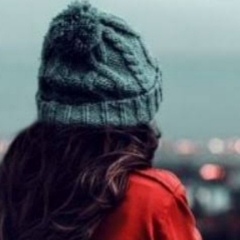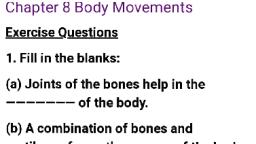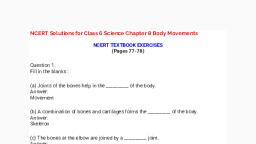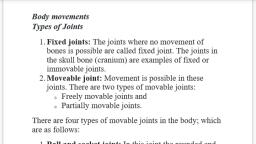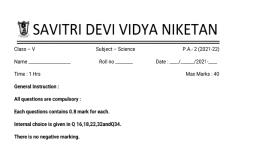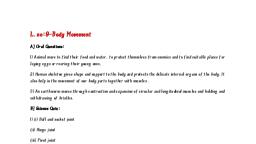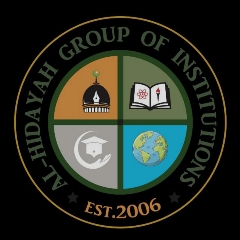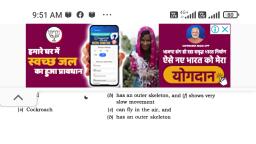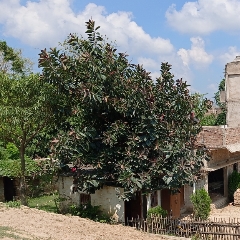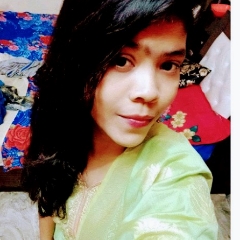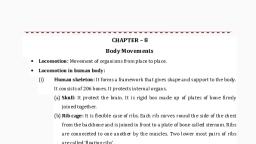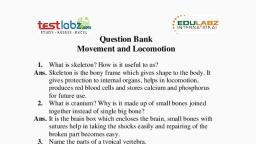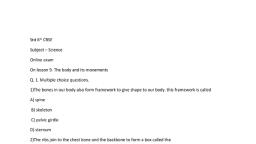Page 1 :
8, , Body Movements, , CNAPTER, , Some Important Definitions, , place where nwo, , Joint: A, , ., , Fred (Immovable), not a l l o w, , 3. Skeleton, , bones, , meet., , do, attachment in which bones, The, joint:, , movements., , :, , All bones in, , our, , body form a framework, , which is, , called a skeleton., , 5., , bone and the backbone, chest, the, Rib cage: The ribs join, called the rib cage., together to form a bar, called a, which tapers at both ends is, Streamlined:, , A, , body, , streamlined body., , which bones are heldtogether., Ligamens: The strong cords by, the muscles are attached, 7. Tendons: The tough cords by which, , to bones., 8. Ball and socket joint:, all directions., , Thejoint which allow the movement in, , 9. Backbone: The bone present at the back ofbody which is made, up of many small bones., , EXERCISES, Q.1. Fillin the blanks:, (a) Joints of the bones help in the, of the body., (b) A combination of bones and cartilages forms the..., of the body., . ., , ...., , (c) The bones at the elbow are joined by a, joint., .., (d) The contraction of the. . ... pulls the bones, during, movement., , Ans., , (a), , movement, , (b) skeleton (c) hinge (d) muscles
Page 2 :
sentences:, , Q.2. Indicate true (T) and false () among the following, the, (a) The movement and locomotion of all animals is exactly, same., , (b) The cartilages are harder than, , bones., , (c) The finger bones do not have joints., , (d), (e), , The fore, , arm, , has two bones., , Cockroaches have an outer skeleton., Ans. (a) False (b) False (c) False (d) True (e) True, Q.3. Match the items in Column I with one or more items of, Column I., , Ans., , Column I |, , Column II, , Upper jaw, , have fins, , Fish, , has an outer skeleton, , Ribs, Snail, , can fly in the air, is an immovable joint, , Cockroach, , protect the heart, shows very slow movement, have a streamlined body, , Column II, , Upper jaw, Fish, Ribs, Snail, , Cockroach, , on, , the, , body, , | Column II, is, , an, , have, , immovable joint, a streamlined, body,, , have fins on the body, protect the heart, , shows very slow movement, , has, , an, , Q.4. Answer the following:, , outer, , skeleton, can fly in the air, , (a) What is a ball and socket, joint ?, (b) Which of the skull, bones are movable ?, (c) Why can our elbow, not move, Ans. (a) Ball and, backwards ?, socket, , joint: The joint in which the, , rounded end
Page 3 :
Science, , fits into the cavity (hollow, of one bone, space)of the other bone (Fig. 8.1) is called, ball and socket joint. Such a joint allows, , movements in all directions. e.g. the joint, between upper, , arm, , and the shoulder., , b) Lower jaw is a movable joint of the, skull bones., , (c)Our elbow can not move backwards, because it has a hinge joint that allows only, back and forth movement., , Fig. 8.1, A ball and socket joint, , Additional Important Questions, Very, , Short Answer, , Type, , Questions, , Q.1. When you are writing in your notebook which parts ofthe, , body are you moving ?, Ans. Fingers and hand., , Q.2. When you turn and look at your friend which part ofthe, , body are you moving?, Ans. Neck., , Q.3. If our body has no joints, what would have happened?, Ans. It would not be possible for us to move in any way., , Q. 4. Can bones be bent ?, Ans. No, bones cannot be bent., , Q.5. What is the function of rib eage ?, Ans. Some important internal parts of our body lie protected inside, , this cage., Q.6. Does earthworm have bones ?, Ans. No, earthworm does not have bones., , Q.7. What is name of the outer skeleton ofsnail?, Ans. Shell.
